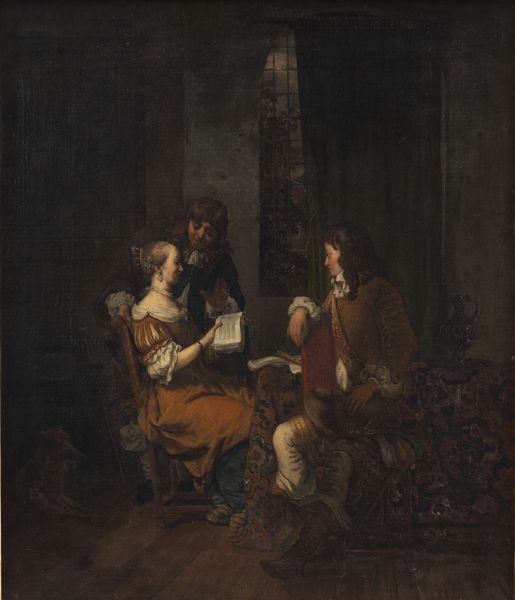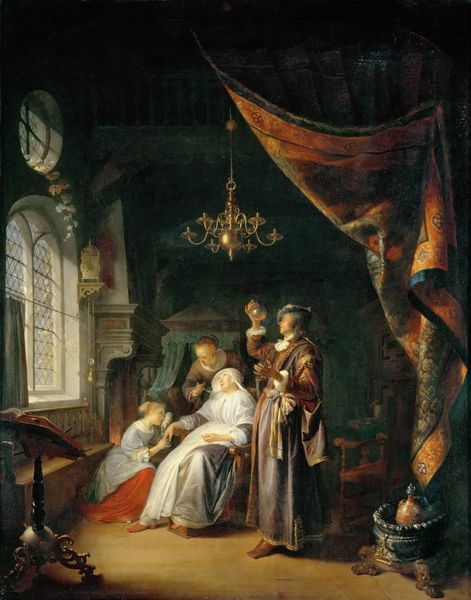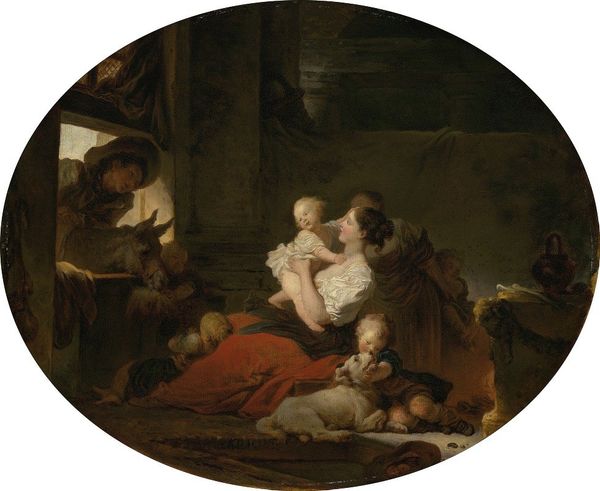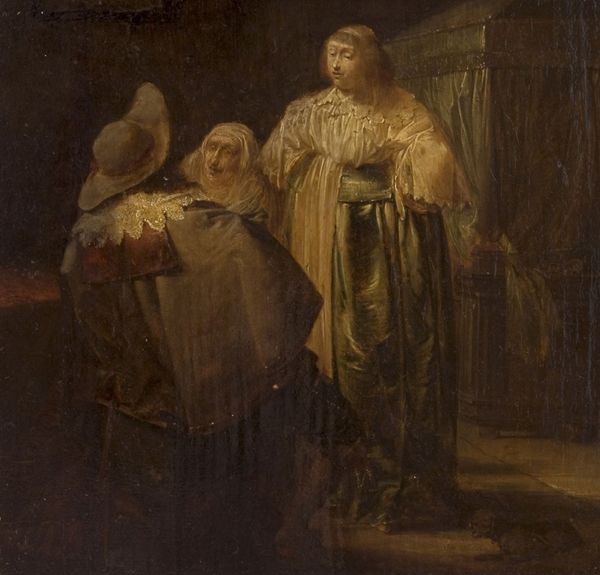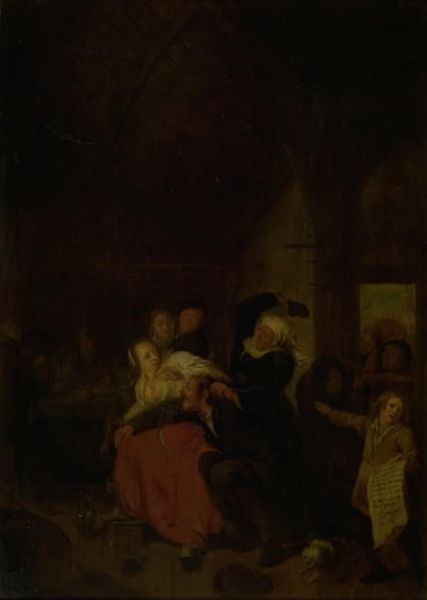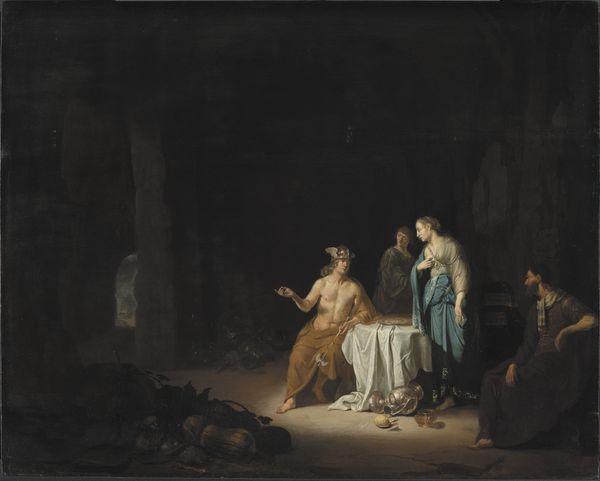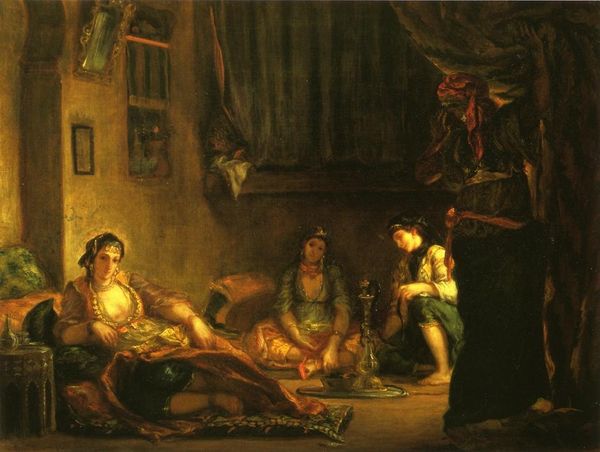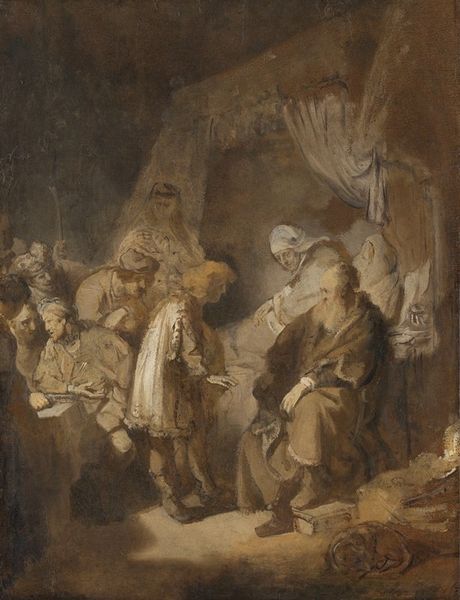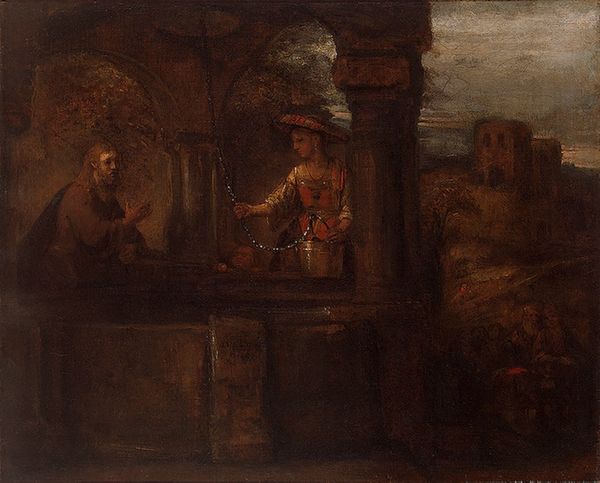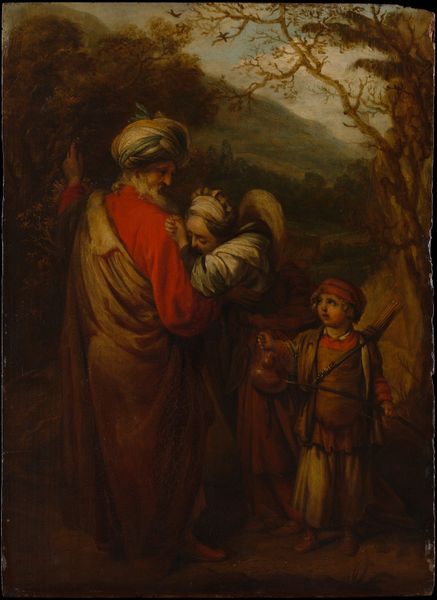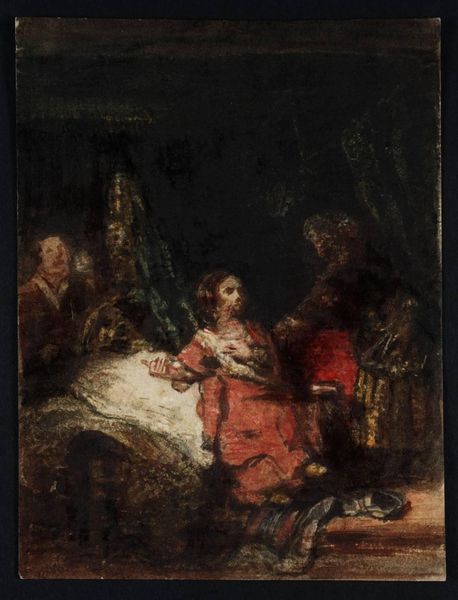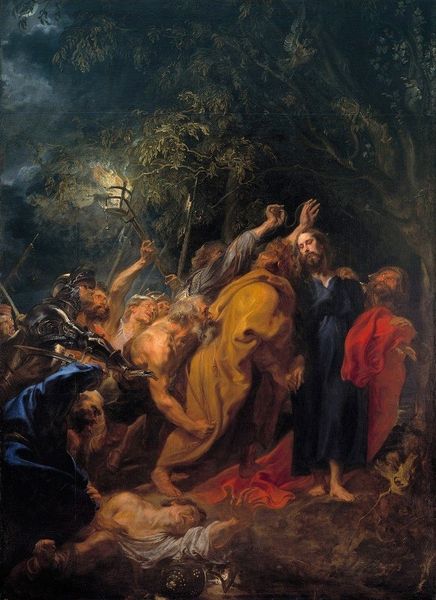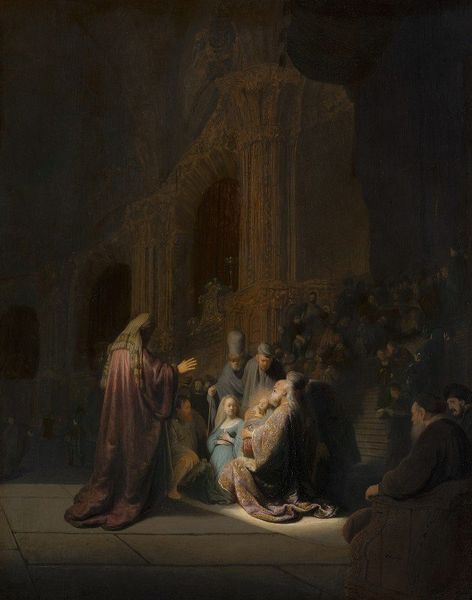
drawing, panel, painting, oil-paint
#
portrait
#
drawing
#
panel
#
narrative-art
#
baroque
#
dutch-golden-age
#
painting
#
oil-paint
#
figuration
#
group-portraits
#
chiaroscuro
#
history-painting
#
realism
Copyright: Public Domain: Artvee
Editor: This is "The Visitation," painted around 1640 by Rembrandt van Rijn. It’s an oil on panel, and the dark setting gives it a rather dramatic, almost theatrical mood. I’m struck by the composition, how the figures emerge from the shadows. What do you see in this piece, especially considering the history surrounding it? Curator: What immediately grabs me is the way Rembrandt uses chiaroscuro to elevate a biblical narrative to the level of high art while democratizing religious art. “The Visitation” isn’t just a representation of a biblical meeting; it’s a calculated assertion of the role of the public and personal experience within religious imagery. Consider the historical context: the Dutch Republic was transitioning from strict Calvinism, and the patronage of art was shifting from the Church to a rising middle class. Editor: That makes a lot of sense. So the shift in patronage affected the type of artwork being made? Curator: Absolutely. This painting, rather than being commissioned for a church, might have found its place in a private home or even in public display spaces beyond the church. How would the change in setting affect how we, or the contemporary viewer, perceive and relate to a religious subject? How does this very intimate scene engage or challenge public perceptions of religion and art? Editor: It really humanizes the biblical figures. Thinking about its potential audience helps me see it differently. Curator: Exactly! It speaks to how Rembrandt positioned his work in the changing social and political landscape of his time. It's not just about art history, it is about social and cultural history, too. Editor: I never considered the location and public aspect. This was very insightful. Curator: And I am reminded about how we view the history within art is based on our perspectives, also a societal shift. Thank you for asking great questions!
Comments
No comments
Be the first to comment and join the conversation on the ultimate creative platform.
